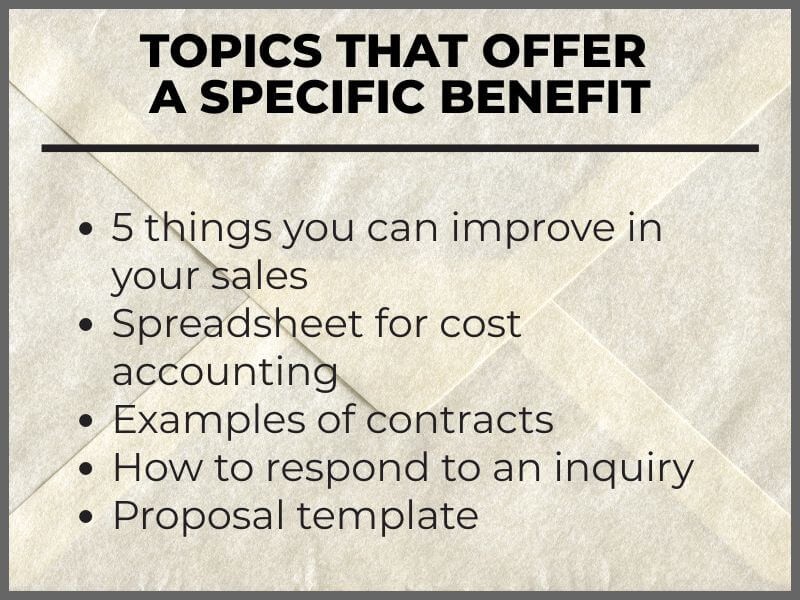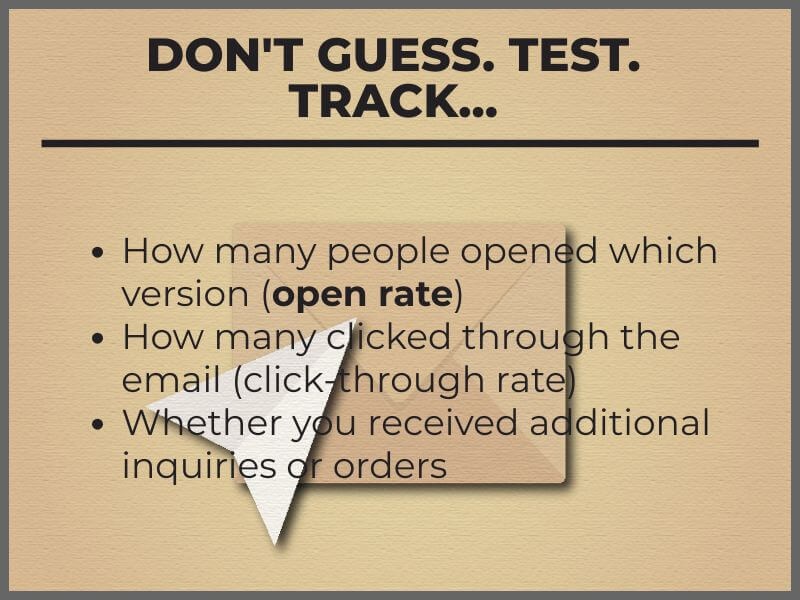
The subject line of an email determines whether someone will open it or skip it. You can have a perfectly designed newsletter, a great offer, and a clear call to action. But if the subject line doesn't pique your curiosity, it's worthless.
People immediately decide whether to open your email. And they do so based on what's written in the subject line.
That's why it's important to learn to think like the people who receive your email: What interests them? What's bothering them? What would they like to receive? What tone suits them - serious, casual, friendly, or professional?
The subject line is the first (and often only) contact you have with the recipient. On average, people decide whether to open an email within two seconds - based on that one line alone. If the subject line doesn't grab attention, the content of the message, no matter how good, simply goes unread.
You can have the best offer, brilliant copy, and professional design, but if the subject line doesn't "speak" to the person who sees it in their inbox, it's worth nothing.
According to research, the average email open rate is between 20% and 30%. But a well-chosen subject line can push that number up to 50% or more.
What does this mean for you? It means that with the same number of emails sent, you can get twice as many readers, clicks, inquiries, or sales.
Email marketing is not just about sending notifications. It’s a tool that should trigger a response. And every response starts with a subject line.
Here are some real-life examples that show how a small difference in wording can make a big difference in opens:
If people are ignoring your emails, the problem may not be the content at all, but the subject line itself.
In someone’s inbox, your email is “competing” with dozens of other messages, and the subject line determines whether your email ends up being opened or left unnoticed. Often, the difference between “deleted” and “read” begins in those first few words.

People rarely open emails out of a sense of obligation. They open them because they recognize something for themselves, a benefit, an emotion, a need, or a feeling that they might miss out on something important.
There are four main reasons why someone will stop and look at your message and decide to open it:
A good email subject line hits at least one of these emotional points. Sometimes more.
Curiosity is a particularly strong trigger. People naturally want to know what they are not told right away. When a subject line leaves a gap that the brain wants to fill, the chances of opening the email increase significantly.
Examples of subjects that arouse curiosity:
Such subjects work because they encourage the "I have to know more" effect.
Be careful, though - the content of the email must fulfill what you announced with the subject line. If the subject line promises something but the message disappoints, the recipient will not even open your email next time.

People like it when you tell them right away what they're getting. If they can tell from the subject line how the email will save them time, help them solve something, or offer a ready-made tool that will make their job easier, they're more likely to open it.
Here we're talking about topics that not only sound useful, but actually are, such as:
These topics are opened by those who have a concrete problem and are looking for an equally concrete solution.
An email with the subject line "30% off!" has been seen by people a hundred times. If you want someone to take you seriously, try a headline that doesn't sound like a copycat, like this:
Headlines like this create the impression of a personalized and thoughtful offer, not just another one in a row.
Nobody likes to feel pressured to buy. A reminder can be useful, but it shouldn't be annoying. The tone should be friendly and unobtrusive, similar to sending a message to someone you know, and not threatening, such as:
These topics give space and remind, but don't push. That's the difference the audience feels.
People open educational emails when you show and prove that you're not going to lecture them. If you share really useful information, experiences, or tools - they'll definitely read you. The goal is to convey knowledge while sounding normal, for example:
When you help people understand something that was unclear to them until yesterday, they'll open your next email. Not because of the title, but because of the trust you've earned.

There is no one-size-fits-all formula for the perfect subject line.
A subject line can work great for a hair salon, but it can be a complete failure for a construction company. Every audience has its own habits, interests, communication style, and level of trust in the sender.
So don't guess. Test.
Testing email subject lines isn't difficult or complicated. In fact, you can get useful information with very simple methods. Here's how:
Send A/B versions of the same email with two different subject lines to a randomly divided audience
Track:
Keep records of:
Email marketing is a learning process, and good analytics are the most important thing. You can't go by gut feeling or assumptions here.
If you regularly track what works and what doesn't, over time you'll learn to write headlines that will get opened.

There are some headlines that may have worked great in the past, but people skip them these days. They've been seen so many times that their brains don't even register them anymore.
Others, as soon as you see them, sound like someone is trying to sell you something. And the worst ones, promise one thing, but inside you get something completely different.
If you want to get emails that will be opened, there are a few things that are best avoided:
The golden rule? Write the way you would like to be written to, i.e. what you would read yourself.
People don't open emails because you've put a lot of effort into packing a sentence, but because they expect something useful, interesting, or at least not taking up their time unnecessarily.
Good headlines:
A good headline doesn't scream. It doesn't pretend to be something it's not. It just conveys a message that makes sense, clearly, naturally, and with a reason. And that's enough.

When done smartly, it can be one of the most useful communication tools you have as a small entrepreneur or craftsperson.
Your customers don't need colorful newsletters with a thousand pieces of information. They need one clear and human message at the right time.
If you regularly send emails that help, inform, or even just brighten their day, you're creating something more important than sales, and that's a relationship. And that relationship later leads to inquiries, referrals, and new orders.
You don't have to know all the marketing tricks, just ask yourself these three questions before each send:
Examples that work better in practice than typical dry subjects:
Instead of: “Newsletter Announcement”
Try: “We’ve added what you were looking for”
Instead of: “Newsletter No. 27”
Try: “A mistake almost all new clients make”
Instead of: “Dear, please read our offer”
Try: “This could save you three hours a week”
People don’t open emails because they believe that someone who understands their needs is behind them. Write like a person to a person. And don’t forget, the point of email marketing is not to impress, but to connect.
If you know who you’re writing to and what can help that person in their business, every email has a chance to become something more than “just another message”.
And if you need someone to help you translate that into concrete suggestions and texts that make sense - contact us.